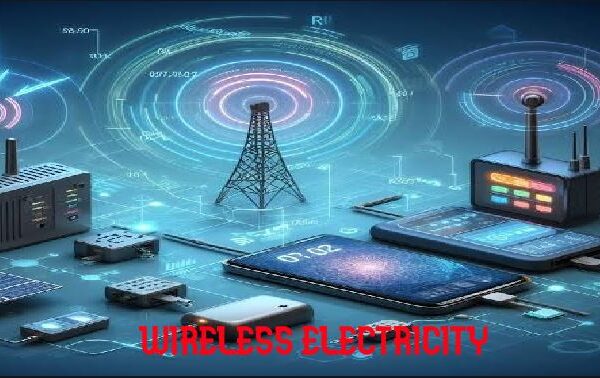It’s fascinating how science can sometimes blur the lines between old dreams and modern realities! The ancient alchemists yearned to turn humble lead into precious gold, and while they failed in the way they imagined, modern scientists have indeed achieved this transformation, albeit fleetingly. Let’s delve into this intriguing story and then explore the “golden rain” experiment.
Turning Lead into Gold: A Modern Marvel
Imagine the sheer thrill of witnessing one element morph into another! That’s precisely what happened in a high-tech laboratory in Geneva, Switzerland. Scientists managed to convert lead (Pb) into gold (Au). Now, before you start picturing industrial-scale gold production from lead, it’s crucial to understand the scale and duration of this incredible feat. The conversion lasted for only a few precious seconds. Still, the fact that it happened at all is a testament to our understanding of the fundamental building blocks of matter.
At the heart of this transformation lies the nucleus of an atom. Think of the atom as a tiny solar system, with a central sun (the nucleus) orbited by planets (electrons). The nucleus itself is packed with particles called protons and neutrons. The number of protons in the nucleus defines what element an atom is. It’s like an atomic identity card!
Lead, with its atomic number of 82, proudly carries 82 protons in its nucleus. Gold, on the other hand, has an atomic number of 79, meaning it has 79 protons. So, the fundamental difference between lead and gold at the atomic level is just three protons.
The alchemists of old, with their mystical approaches, couldn’t possibly manipulate the atom’s nucleus. They were working with chemical reactions, which involve the rearrangement of electrons, not the alteration of the nucleus itself. Changing the number of protons requires a nuclear reaction, a process that involves immense energy and sophisticated techniques.
Modern scientists, armed with powerful tools and a deep understanding of nuclear physics, found a way to nudge lead towards becoming gold. Their experiment involved bombarding lead ions (lead atoms that have lost some electrons) with highly energetic photons – think of them as tiny packets of light carrying a powerful punch.
When these energetic photons collided with the lead ions, they delivered enough energy to knock out three protons from the nucleus of some lead atoms. Voila! With three fewer protons, those lead atoms transformed into gold atoms.
This achievement, while short-lived and requiring significant energy, is a monumental demonstration of our ability to manipulate matter at its most fundamental level. It confirms the theoretical understanding that elements are not immutable; they can be transmuted, albeit under extreme conditions.
The Illusion of “Gold Rain”: A Chemical Trick
Now, let’s turn our attention to the “gold rain” experiment. The idea of simply dissolving lead nitrate and then, through a series of steps, magically obtaining gold particles is certainly captivating! The image of a flask brimming with gold derived from lead is the alchemist’s dream come true.
However, the shimmering, golden-colored particles that appear in this experiment are not gold. Instead, they are crystals of lead iodide (PbI2).
Let’s break down the chemistry involved:
Dissolving Lead Nitrate:
When you dissolve lead nitrate (Pb(NO3)2) in water, it breaks down into its constituent ions: lead ions (Pb2+) and nitrate ions (NO3−). The solution becomes clear because these ions are dispersed throughout the water.
Adding Potassium Iodide: When you add potassium iodide (KI) solution, it also dissociates into its ions: potassium ions (K+) and iodide ions (I−).
Formation of Lead Iodide Precipitate:
When the lead ions (Pb2+) from the lead nitrate solution encounter the iodide ions (I−) from the potassium iodide solution, they react to form lead iodide (PbI2), which is insoluble in water. This insolubility causes it to precipitate out of the solution as a solid. This precipitate often appears as a bright yellow solid.
Boiling and Cooling:
Boiling the solution might help in dissolving very fine particles of lead iodide and ensuring a more uniform distribution of ions. As the solution cools, the solubility of lead iodide decreases, causing it to recrystallise. These recrystallised crystals can form beautiful, thin, hexagonal plates that have a characteristic golden, shimmering appearance.
The Golden Illusion:
The reason these lead iodide crystals mimic the colour of gold is due to their optical properties. The way light interacts with the crystal structure causes it to reflect light in a way that our eyes perceive as golden or yellowish-orange. This beautiful visual effect is what gives this reaction the poetic name “Gold Rain.”
While it’s not real gold, the “Gold Rain” experiment is a wonderful demonstration of chemical reactions, solubility, and the formation of crystals with striking visual properties. It highlights how seemingly simple chemical processes can produce results that captivate our imagination.
In Conclusion:
The scientific conversion of lead to gold, though fleeting and energy-intensive, is a remarkable achievement in nuclear physics. It shows us the fundamental interconnectedness of elements at the atomic level. On the other hand, the “Gold Rain” experiment is a delightful chemical demonstration that showcases the beauty of precipitation reactions and the fascinating way light can interact with chemical compounds to create illusions.
Both stories, in their way, touch upon the long-held human fascination with transforming base materials into something precious. While one is a cutting-edge scientific breakthrough, and the other a captivating chemical trick, both remind us of the wonders that lie within the realm of matter and its transformations. So, while you won’t be striking it rich with your flask of “gold,” you’ll certainly have witnessed a beautiful chemical phenomenon






